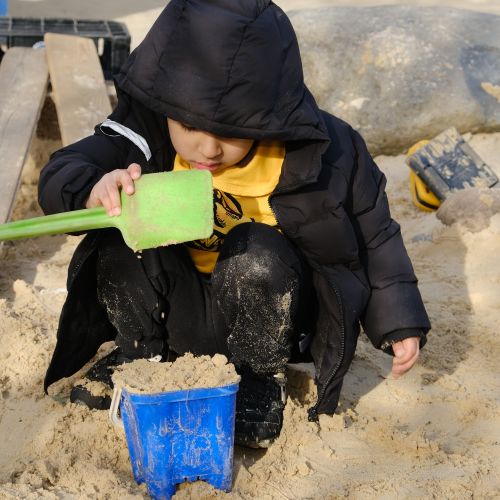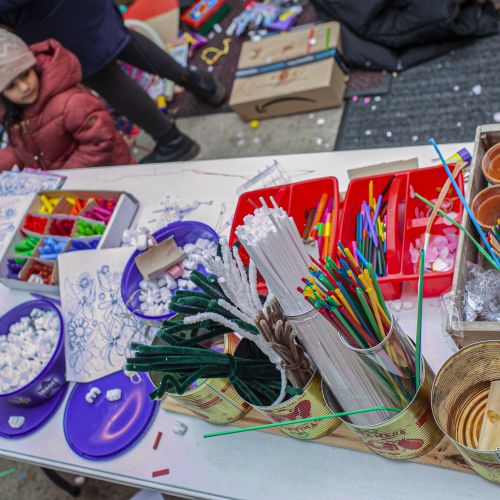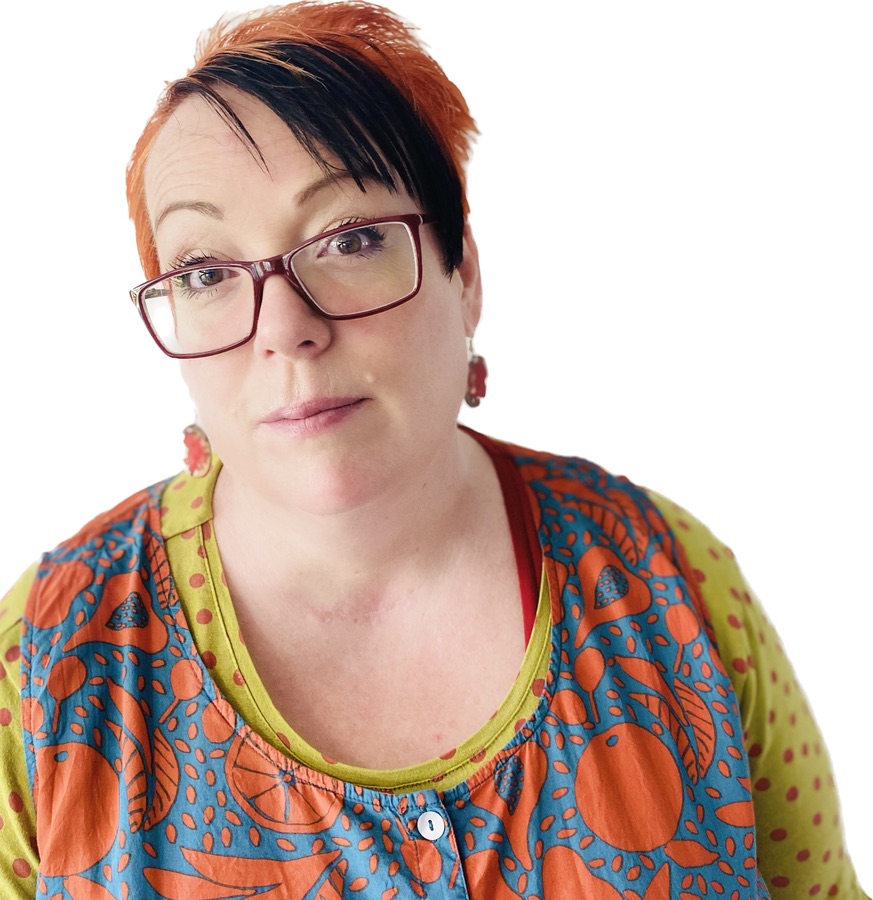Blog
Thinking with Materials: Learning and Understanding
This article is an adaptation from “Intelligent materials: agency and aesthetics” first published in Early Education Journal No 89 Winter 2019
On my return from my first visit to Reggio Emilia, Italy many years ago I began to evaluate – in the Italian sense of giving value to something – the aspects of my practice as an artist-educator that I wanted to think more deeply about. I began to look again at the familiar materials and tools of clay, graphics, wire, collage, light, photography, blocks and loose parts that I regularly explored with young children and set about researching how children approached and used these materials when they were presented in different ways. I found that I had often thought about how materials should be accessible and available to children but not about how the curation and presentation of the materials enabled children to develop understanding and communicate their learning.

Child is playing with sand.

A tree branch.
I also examined the perspective and perceived role of the educators who I worked alongside to explore our own intentions and knowledge about the materials we used in our work with young children. I found that we often thought it was enough to just observe what children did with them, yet we as adults didn’t always understand the potential of materials and what they offered for children’s learning and development. The underlying questions that arose out of these researchful encounters with materials and children was to try to find out if our adult ways of working as educators were attuned and fitting with the strategies of the children themselves, and if not, to align them better.
I found myself thinking more about:
- the qualities, affordances and properties of the materials
- the transformative potential (intelligences) of the materials
- the dialogues (intentions for learning) proposed with the materials
- the agency of the materials (how the materials ‘spoke’ to the children)
Cuffaro (1995) reminds us that materials in the hands of children are akin to tools, which give form to and express their meaning-making and knowledge about the world and this requires us, as educators to:
- pay closer attention to how our choices of which materials connect and meet with the ideas of the children
- consider which ways to propose and present materials to activate communication and expression
- give thought to which materials might be richer in potential and intelligence that enable children to give form to their thinking
Vecchi (2010) provokes my thinking in suggesting that with young children, we must venture beyond the exploration of properties of materials and techniques with them and consider the processes of how materials and children’s ideas go together and how materials can evoke children’s memories and past experiences. In this way, we can view materials as activators of learning.
In a presentation to the International Summer School in Reggio Emilia (2010) Vecchi gave the example of the yearly provocation of the exploration of thinking about autumnal leaves. The study of seasonal change through exploring the materials of autumn is of course something that is familiar to many of us. Vecchi pointed out that all too often dried, decaying leaf corpses are collected and displayed for children to explore. The inherent danger in this she warned was that we might teach or activate in children that autumn was only about death and only about the singular colours of red, orange and brown. Instead, she suggested we should contemplate the whole pulsating life cycle of trees and not just the structure of a single part of that tree. To find instead the aesthetic and expressive activators that could provoke the children and ourselves to see colours not as a single, named shade, but as a diverse palette of variations of shades and hues and where we can invite children to consider the relationships between the now fallen and transformed leaf to explore deeper and more relational enquiries such as “What is alive?”, and “How do we know?”
However, this way of working requires of us to know materials and what they can do and offer. We need to engage with materials ourselves, spending time with them, playing and enabling ourselves to think with the materials that we offer to the children. In doing so, we can better attune our strategies of being with children and materials so that our actions are not in tension with those of the children. Importantly, this understanding of materials will also enrich our own creative and imaginative thinking in curating and designing contexts and spaces that delight the eye, the body, and mind whilst also meeting with the ideas, memories and experiences children possess to make learning more meaningful and impactful.
References
Cuffaro, Harriet K. (1995). Experimenting with the World: John Dewey and the Early Childhood Classroom. Teachers College Press.
Vecchi, Vea. (2010). Art and Creativity in Reggio Emilia: Exploring the Role and Potential of Ateliers in Early Childhood Education. London: Routledge.
 |
Debi Kayte-Hartland Associate Consultant with Early Education
|
